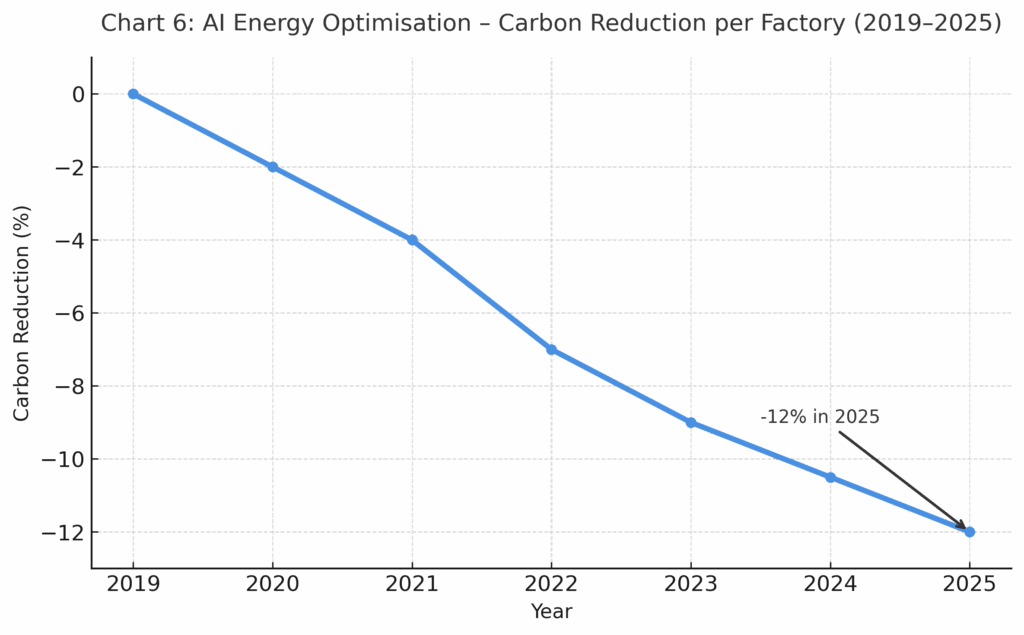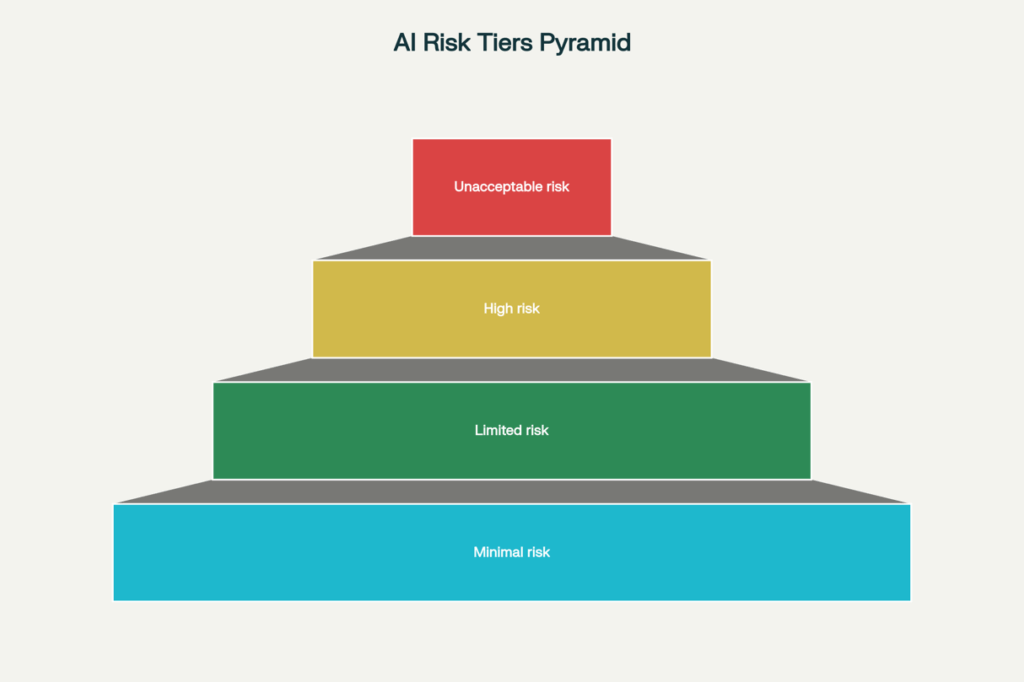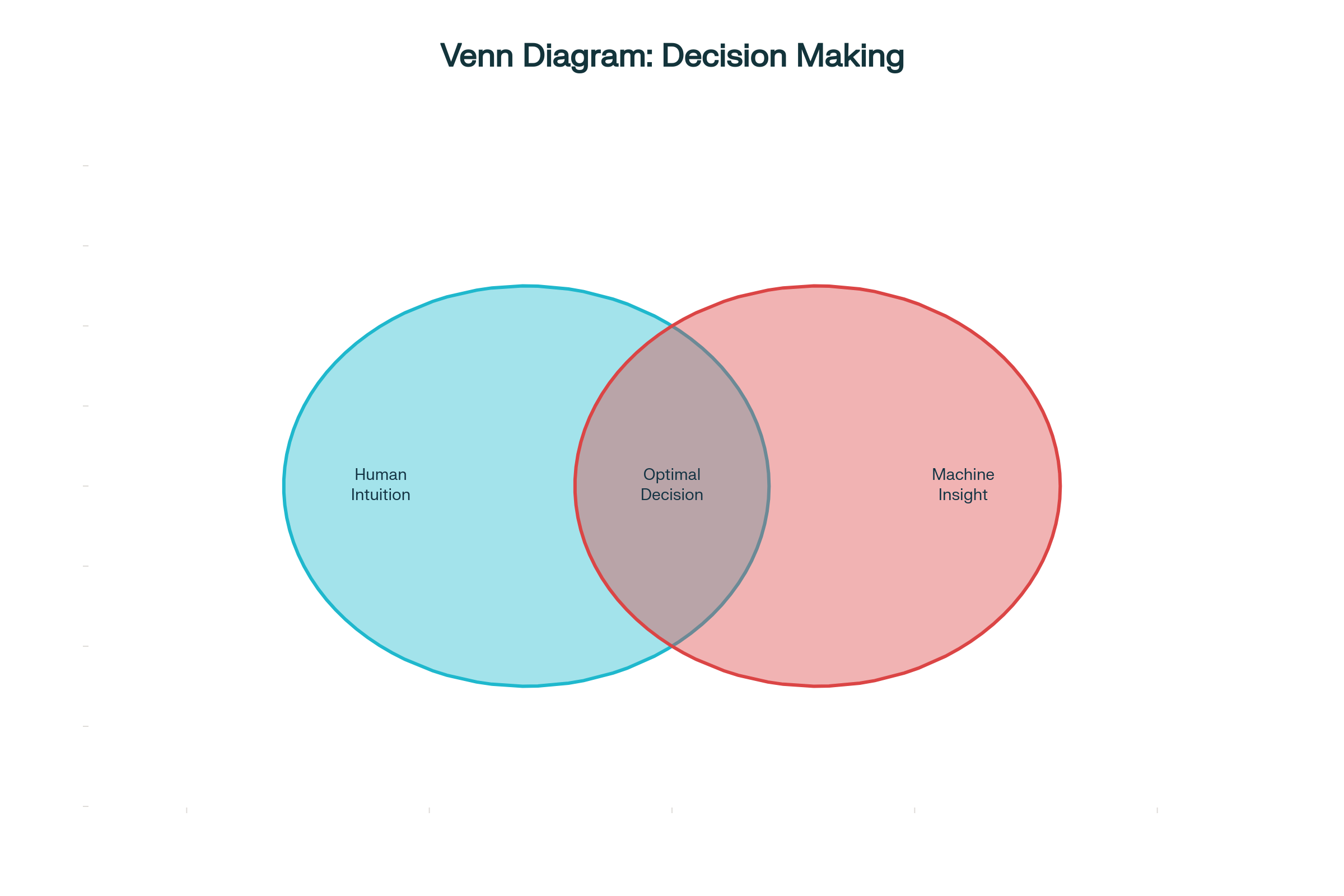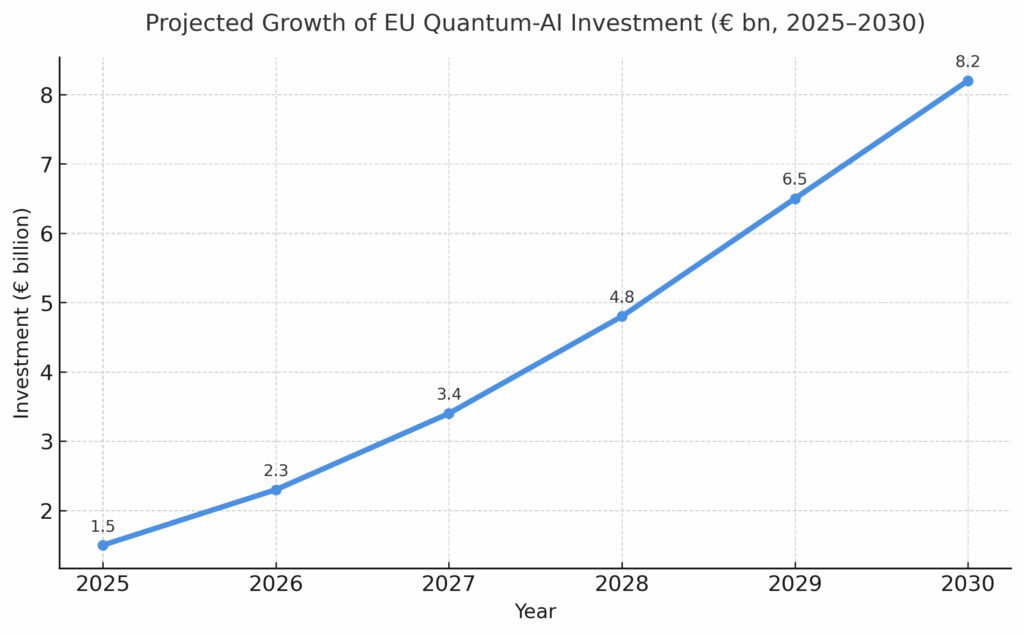1. Setting the Scene: The Age of Practical AI
It’s 2026, and artificial intelligence is no longer a distant idea lurking in R&D labs or Silicon Valley slide decks. It’s here, embedded quietly but powerfully in almost every aspect of daily business life across the UK and Europe.

AI writes our headlines, checks our invoices, routes our deliveries, prices our insurance, edits our TikToks, and even suggests the next line of this sentence. What was once the domain of experimental teams is now a mainstream productivity engine – one that’s scaling through every industry vertical.
The past few years have been a period of intense acceleration. In 2023, ChatGPT ignited a global awareness shift; by 2025, most enterprises in the UK and Europe had moved from pilot projects to operational deployment. 2026 is the year where AI stops being optional – and becomes part of the infrastructure of work itself.
The economic context
The UK AI economy now sits comfortably among the world’s top three markets – valued at roughly $92 billion (£72 billion) in 2024, with forecasts pointing to $312 billion by 2030. Meanwhile, the broader European AI market has surpassed €42 billion, expected to quadruple by the end of the decade.
The UK government’s Office for Artificial Intelligence estimates that the technology could add £47 billion annually to GDP through productivity improvements and automation-driven efficiencies. Germany, France, and the Nordics are following closely behind, investing in sovereign models, AI hubs, and AI-ready digital infrastructure.
Table 1 – AI Market Growth 2025–2030
| Region / Country | 2025 Market Value | Projected 2030 | CAGR | Primary Focus |
| United Kingdom | $92 bn (£72 bn) | ~$312 bn | 27.7 % | Finance, healthcare, marketing |
| European Union | €42.6 bn | €190 bn+ | 31 % | Manufacturing, public services |
| Germany | ~€15 bn | ~€65 bn | 30 % | Automotive, industry 4.0 |
| France | ~€10 bn | ~€50 bn | 28 % | Public sector, retail |
| Nordics | ~€2.5 bn | ~€10 bn | 25 % | Energy, tech |
But behind the numbers lies something more important: cultural adoption. Europe’s relationship with AI is built on trust, accountability, and ethics – values embedded in its upcoming AI Act, which will go live later in 2026. This grounding gives European AI a distinctive flavour: human-centred, privacy-led, and designed to complement rather than replace people.
2. Generative AI and the Creative Renaissance
If 2023–2024 was the “wow” moment for generative AI, 2025–2026 is where it matures into a creative workhorse.
From brand storytelling to customer service, AI is now seamlessly producing text, images, and video that slot into the marketing and content supply chain. This is particularly evident in the UK’s thriving MarTech sector, where generative models are enhancing everything from campaign orchestration to creative personalisation.
A £3.6 billion creative ecosystem
The UK’s generative AI market generated about $689 million (£550 million) in 2024, forecast to reach $4.48 billion (£3.6 billion) by 2030 – a growth rate above 30 %. Europe overall is tracking around 33 % CAGR, with Germany’s infrastructure sector seeing the fastest adoption.
Table 2 – Generative AI Market (2024–2030)
| Region | 2024 Revenue (USD) | 2030 Revenue (USD) | CAGR | Largest Segment |
| United Kingdom | 688.9 m | 4.48 bn | 30.5 % | Software |
| Germany | ~500 m | 4.9 bn | 35 % | Infrastructure |
| Europe total | ~2.8 bn | >20 bn | ~33 % | Services & deployment |
Real-world examples across MarTech and media
- Retail & e-commerce: Marks & Spencer now uses generative AI within its content supply chain, generating campaign copy, email personalisation and dynamic imagery aligned with product availability. The result: 15 % higher click-throughs and 12 % uplift in online sales during a six-month pilot.
- Publishing: In France, media outlets like Le Monde use generative tools to produce real-time summaries, freeing journalists to focus on analysis.
- Gaming: Swedish studios are employing AI to prototype dialogue trees and world-building scripts in hours, not weeks.
- B2B marketing: UK SaaS firms have embedded AI assistants into CRMs, enabling automatic generation of campaign briefs, ad variations, and asset tagging inside platforms like HubSpot or Optimizely CMP.
These tools aren’t about replacing creative teams – they’re about augmenting them. Copywriters now act as prompt strategists, editors as curators, and designers as AI conductors, orchestrating complex workflows where humans and models co-create.
Workflow orchestration in content operations
One of the most exciting areas is AI-driven workflow orchestration – the glue that ties together MarTech, CRM, CMS, and analytics systems.
In the pre-AI era, content planning, asset management and campaign execution lived in silos. Today, AI tools inside systems like Optimizely CMP connect these layers, automating dependencies and surface-level decisions.
Example workflow:
- A generative AI drafts a campaign plan based on seasonal product data.
- Workflow AI routes the draft to the right reviewers via CMP integrations.
- Predictive analytics models estimate potential performance across channels.
- Approved assets are automatically tagged, localised, and scheduled.
This kind of orchestration reduces production times by 40–60 % in enterprise environments – while preserving human oversight.
As a result, marketers are moving from task execution to strategic orchestration, freeing time for storytelling, innovation and audience engagement.
3. AI in Operations, FinTech and Financial Services
If marketing is the visible face of AI, financial operations are its engine room. Across London, Frankfurt and Stockholm, banks and FinTechs are rebuilding the plumbing of finance with intelligent automation.
Fraud, risk and compliance
Machine learning models are now central to fraud detection – scanning billions of transactions in real time to flag anomalies. Since 2024, UK banks have collectively reduced card fraud losses by over 40 %, thanks to AI systems capable of analysing behavioural biometrics (typing speed, device angle, session duration) instead of relying solely on transaction data.
FinTech challengers like Revolut and Monzo have gone further, deploying hybrid AI-human review systems for anti-money laundering (AML) that adjust risk thresholds dynamically based on user activity and network analysis.
Meanwhile, traditional institutions like Barclays and HSBC use explainable AI (XAI) models in credit scoring, ensuring regulatory transparency and bias detection.
Table 3 – AI in Financial Operations
| Function | AI Application | Benefit | Example |
| Fraud detection | Behavioural ML models | -40 % fraud losses | Revolut, Monzo |
| AML compliance | Dynamic rule engines | Reduced false positives | Santander, N26 |
| Credit scoring | Explainable models | Fair, auditable decisions | HSBC, Barclays |
| Customer service | LLM-based chatbots | 24/7 multilingual support | Nationwide, BBVA |
| Wealth management | Predictive analytics | Personalised insights | Nutmeg, Scalable Capital |
The FinOps revolution
Finance teams are also adopting AI-assisted workflow orchestration, or “FinOps”, to automate reconciliation, forecasting, and procurement approvals. Using generative copilots embedded in systems like Xero, Oracle NetSuite, and SAP, teams can generate narrative reports, surface anomalies, and even simulate future financial outcomes.
This shift is critical because it frees CFOs and operations directors to act as strategic navigators rather than back-office gatekeepers. AI provides the clarity; humans provide the judgment.
Embedded AI in payments and customer journeys
At the consumer layer, embedded AI in payments is driving personalised experiences – think credit risk models that adjust limits in real time or checkout AI predicting optimal payment methods per user.
FinTech innovators are experimenting with voice- and face-recognition wallets, micro-lending algorithms for gig-economy workers, and AI-powered ESG scoring to reward sustainable financial behaviour.
For example, Swedish FinTech Doconomy uses AI to calculate the carbon footprint of every transaction, while Starling Bank integrates AI-based anomaly detection to notify users of “out-of-pattern” spending before fraud occurs.
Ethical dimensions in finance
The financial sector also sits at the front line of AI ethics and accountability. Under the EU AI Act, credit-scoring algorithms are classed as “high-risk” systems – meaning institutions must document training data, provide human oversight, and maintain explainability. The UK’s own AI Growth Zone guidelines echo similar expectations, though they favour voluntary codes over fines.
Banks are therefore investing in AI governance boards, bias-auditing tools, and model interpretability dashboards, ensuring that automation doesn’t erode trust.
As one European bank CIO recently put it:
“We’ve learned that transparency isn’t a burden – it’s a business advantage. Customers trust the institutions that can explain their algorithms.”
4. AI in Healthcare, Manufacturing & Smart Industry
If AI has revolutionised marketing and finance, healthcare and manufacturing are where it’s quietly saving lives – and saving billions.
Healthcare: From Data to Diagnosis
Europe’s AI-driven healthcare market is projected to jump from $4.3 billion in 2023 to $39 billion by 2030 – a compound annual growth rate of nearly 37 %.
In the UK, the NHS AI Lab and NHSX have deployed machine-learning systems across over 60 hospital trusts. These tools read X-rays, scan MRIs, and analyse blood tests faster than over-stretched human specialists – but crucially, not instead of them. The human-in-the-loop model remains central to trust.
Use cases making impact:
- Radiology & pathology automation: Algorithms identify early-stage cancers or pneumonia with 94–97 % accuracy, helping clinicians prioritise patients and reduce waiting times.
- Virtual hospitals & remote care: AI triage apps in Birmingham and Manchester are monitoring patients with chronic illnesses remotely, cutting emergency admissions by 12–15 %.
- Clinical administration: Natural-language models summarise patient records, allowing doctors to reclaim up to two hours per shift from paperwork.
European Collaboration: Data with Purpose
Cross-border projects such as Cancer Image Europe and AI4HealthSec demonstrate a distinctly European approach: federated data sharing under GDPR compliance. Rather than pooling sensitive data centrally, models are trained across distributed datasets – preserving privacy while scaling insight.
Table 4 – AI Healthcare Use Cases
| Application | UK Adoption | EU Adoption | Benefits | Example Institutions |
| Diagnostic Imaging | Extensive | Expanding | Faster, accurate diagnostics | NHS Hospitals, Charité Berlin |
| Remote Monitoring | Growing | Emerging | Fewer readmissions | NHS, Barcelona Clinics |
| Workflow Automation | Rising | Rising | Reduced admin burden | NHS Trusts, French Hospitals |
| AI-Driven Genomics | Early stage | Collaborative | Precision medicine | EU Consortia, UK Labs |
Manufacturing: Industry 4.0 Goes Green
Across Germany, France, and Scandinavia, AI is breathing life into what some call Europe’s Industrial Renaissance.
Robotics, computer vision and digital twins are reshaping how factories operate. German auto plants now deploy AI vision systems that detect micro-defects in components, preventing expensive recalls. Predictive-maintenance algorithms monitor turbines, conveyor belts, and train networks – saving millions in downtime.
Example: Deutsche Bahn’s Predictive Network
Sensors on rolling stock feed data to AI models that predict faults days before they happen. The result: a 20 % reduction in service disruptions and an 8 % drop in energy consumption.
Manufacturers are also using AI for sustainability. Under the European Green Deal, factories must meet ambitious carbon-reduction targets; AI helps by optimising energy use, balancing loads across smart grids, and recommending circular-economy processes.

Workforce Implications
Instead of mass layoffs, most European manufacturers are using AI to augment human skill. Cobots (collaborative robots) handle repetitive tasks, while workers upskill into programming, quality, and systems analysis. It’s a shift from labour to literacy.
5. Public Services, Smart Cities & AI for Accessibility
This is where the story becomes deeply human. While enterprises chase efficiency, Europe’s public sector is using AI to enhance quality of life, improve accessibility, and close inclusion gaps that predate technology itself.
Smart Cities: Data-Driven Urban Living
Cities such as Stockholm, Milan, and London are running pilot programmes that make urban systems self-optimising.
- Stockholm: AI-controlled traffic lights adjust in real time, cutting congestion by 15 % and emissions by 9 %.
- Paris: Uses satellite data and AI to map heat islands, guiding urban greening projects that reduce summer mortality.
- Milan: Emergency dispatch algorithms triage 112 calls, improving ambulance response times by 18 %.
- London: Predictive analytics flag emerging crime patterns and social-care needs, enabling faster community interventions.
Table 5 – AI Applications in Smart Cities
| City | Primary Application | Reported Impact |
| Stockholm | Traffic control | 15 % fewer delays |
| Paris | Heat mapping | Healthier urban micro-climate |
| Milan | Emergency dispatch | 18 % faster response |
| London | Predictive policing & social care | Proactive intervention |
AI for Accessibility & Special Needs
One of the most promising – and least discussed – frontiers is AI for accessibility. Here, technology truly acts as an equaliser.
Education & Learning Support
In UK classrooms, AI-powered tools are personalising learning for pupils with dyslexia, ADHD and autism. Platforms like Texthelp Read & Write convert text into spoken words, while adaptive-learning engines adjust reading complexity on the fly. The Welsh Government’s “AI for Inclusion” pilot has shown a 12 % improvement in reading comprehension among students using such tools.
Assistive Communication
AI speech synthesis has moved beyond robotic monotone. Systems trained on short voice samples can now replicate an individual’s voice for those losing speech through illness (as pioneered by Acapela Group in Belgium). In hospitals, patients with ALS or motor neurone disease use gaze-tracking combined with generative text models to communicate naturally.
Mobility & Vision
Computer-vision apps such as Seeing AI and Be My Eyes AI (developed in Europe with OpenAI GPT-4) narrate surroundings to visually impaired users – describing street signs, facial expressions, or menus in multiple languages. The European Accessibility Act, coming into force in 2025, is accelerating investment in these technologies.
Employment & Inclusion
AI-based recruitment tools are beginning to level the playing field for neurodiverse and disabled applicants – when used ethically. Some UK job boards anonymise CVs and translate neurodiverse communication patterns into employer-friendly summaries, helping candidates showcase capability without bias triggers.
Case Study – AI-Assisted Recruitment at BBC
The BBC’s pilot “FairHire AI” platform uses bias-mitigation models to anonymise applications and match skills to job requirements. After a year, representation of neurodiverse hires rose by 11 %, and overall satisfaction among disabled applicants doubled.
Challenges & Ethical Watchpoints
Even in inclusive tech, bias lurks. Facial-recognition systems still misclassify non-white faces at higher rates. Voice AI struggles with regional accents or speech impairments. The solution isn’t less AI – it’s better AI, trained on richer, more representative datasets.
The UK’s Centre for Data Ethics and Innovation (CDEI) and the EU’s AI Office are now funding diversity data initiatives to expand the quality of training sets. This “ethical data infrastructure” is becoming as vital as broadband.
6. Ethics, Governance & Human–AI Collaboration
AI ethics in 2026 is no longer a theoretical debate; it’s a regulatory reality. Europe and the UK are shaping global standards for trustworthy, explainable, and inclusive AI.
The EU AI Act: World’s First Comprehensive AI Law
Due to be fully enforced in August 2026, the EU Artificial Intelligence Act categorises AI systems by risk – from minimal to unacceptable – with explicit obligations.
Key Provisions:
- Risk-based categorisation: Unacceptable (banned), high-risk (regulated), limited (transparency), minimal (voluntary).
- Transparency: Users must be told when interacting with AI.
- Human oversight: Required for all high-risk applications (e.g., recruitment, healthcare, finance).
- Accountability: Fines up to €35 million or 7 % of global turnover.

The UK’s Parallel Path
The UK, outside EU jurisdiction, is opting for a lighter, innovation-friendly regime. Through its AI Growth Zones and the CDEI, it promotes principles of fairness, accountability, and proportionality rather than direct penalties.
| Aspect | EU AI Act | UK Approach |
| Legal basis | Hard law | Guiding principles |
| Enforcement | Regulatory fines | Voluntary codes |
| Transparency | Mandatory | Encouraged |
| Flexibility | Lower | Higher |
| Goal | Risk mitigation | Innovation balance |
The two systems differ in tone but not in spirit. Both aim to make AI safer, fairer and more explainable – an approach that has become a selling point for European vendors globally.
Corporate Governance and Ethical Ops
Leading organisations are embedding AI ethics into operations the same way they once did cybersecurity. Governance frameworks now include:
- AI Policy Committees: Board-level oversight of AI strategy and risk.
- Model Register: Inventory of all AI systems, data lineage, and audit logs.
- Bias Testing Protocols: Mandatory fairness evaluation pre-deployment.
- Explainability Dashboards: Tools like Fiddler AI and Arthur Monitor expose model reasoning for audit and compliance.

Ethical MarTech and AI for Trust
In marketing and advertising, ethical AI means transparency in personalisation and fairness in algorithmic targeting.
- Consent and Control: Users increasingly expect to know why they’re seeing a given ad or offer.
- Bias-Free Automation: Marketing teams are auditing generative outputs to avoid stereotypes or tone biases.
- Explainable CX: AI systems that can justify a recommendation (“you saw this product because…”) are seeing higher trust and conversion rates.
Case Example – Optimizely Opal AI Trust Module
Optimizely’s Opal AI suite now includes an explainability layer that lets marketers trace the model’s reasoning behind personalisation choices, giving compliance and creative teams shared visibility – a new standard for “ethical ops”.
The Rise of Human–AI Collaboration
Perhaps the most important ethical frontier is cultural: redefining what it means to collaborate with machines.
A 2025 CDEI survey found that 68 % of UK workers are already using some form of AI assistant weekly. In creative and analytical roles, AI acts as a co-pilot – suggesting, summarising, synthesising – while humans retain contextual judgment.
This division of cognitive labour is reshaping job design:
- Humans: empathy, ethics, creativity, strategy.
- AI: scale, speed, pattern recognition.
Case Study – Human–AI Financial Teams
A major UK bank restructured its risk department into “AI-augmented pods”. Each analyst works with an AI assistant that flags anomalies and drafts reports. Results: 30 % faster decisions, 12 % fewer compliance errors, and higher employee satisfaction.
The Ethics of AI for Special Needs
Returning to inclusion: the ethics conversation isn’t only about harm prevention – it’s about active good.
AI’s capacity to adapt interfaces, personalise learning, and translate languages in real time could become humanity’s greatest accessibility tool.
Europe’s “AI for Good” initiatives – from the UN’s Geneva hub to the UK’s Alan Turing Institute programmes – are funding AI prosthetics, real-time sign-language translation, and emotion-recognition systems for autism therapy.
“The most ethical AI we’ll build this decade won’t replace humans; it will empower those who’ve historically been excluded.”
– Dr Sophie Legrand, Director of AI Inclusion, Sorbonne Digital Health Lab
7. Skills, Workforce Transformation & the Human Capital Revolution
AI is rewriting the job description of the twenty-first century. Across the UK and Europe, a talent revolution is underway – one that prizes curiosity and digital literacy as much as coding.
The Skills Shortfall
Despite a strong research base, Europe faces an AI-skills deficit of more than 350,000 professionals.
In the UK alone, demand for data scientists, prompt engineers, and AI-literate marketers outstrips supply by 50,000 roles.
The bottleneck isn’t just technical. Employers increasingly need hybrid thinkers – people who can bridge marketing, ethics, and analytics; who understand both human behaviour and machine logic.
Upskilling & Reskilling at Scale
Governments, universities and businesses are collaborating to close the gap.
- Alan Turing Institute AI Fellowships – funding cross-disciplinary PhDs linking AI to healthcare, finance and humanities.
- InvestAI (EU) – a €200 billion initiative supporting AI education and SME adoption programmes.
- Private-sector academies – L’Oréal, BMW and PwC run internal “AI Academies” where marketers learn prompt design, model ethics and automation strategy.
These programmes are complemented by a rise in micro-credentials: 10- to 30-hour courses in “AI Governance”, “Ethical Prompting”, or “Creative Automation”.
By 2026, 42 % of UK employers say they will only hire marketing candidates who can “work fluidly with AI”.
New Roles in the AI Economy
| Role | Core Skillset | Emerging Sector Examples |
| AI Trainer / Auditor | Data curation, bias testing, ethics | Finance, Public Sector |
| AI Ops Engineer | Workflow automation, pipeline optimisation | Manufacturing, Retail |
| Creative Technologist | Generative content design + UX | Marketing, Media |
| AI Ethics Officer | Governance, compliance frameworks | Healthcare, Education |
| Human-AI Collaborator | Empathy, decision context | Every sector |
Human–AI Collaboration in Practice
The future workplace is augmented, not automated. In marketing agencies across London and Amsterdam, AI copilots handle data and drafts while humans shape strategy, tone and emotion. A copywriter becomes a “creative conductor”, guiding a choir of models.
Example – Omnicom UK AI Studio:
Integrated chat-based assistants help planners analyse customer data and suggest personalised concepts. Campaign turnaround times have dropped by 35 %, and employee burnout has fallen significantly.
This collaboration marks a new division of labour:
- Machines – scale and pattern recognition.
- Humans – context, intuition and narrative.

8. Workflow Orchestration & Operational AI
AI’s most transformative impact may not be in the headline-grabbing areas of art or finance – but in the invisible plumbing of organisations: workflow, coordination, and execution.
From Automation to Orchestration
Traditional automation focused on individual tasks – sending emails, updating records, processing claims.
Workflow orchestration is different: it connects entire processes across departments, using AI to understand dependencies and make dynamic decisions.
Marketing example:
In Optimizely’s CMP, as we’ve already stated, AI can now map a content brief through approval, localisation and publishing – automatically assigning tasks, predicting bottlenecks and alerting managers to risks.
In operations, AI drives synchronisation between procurement, finance, and supply-chain teams. By feeding real-time data into predictive dashboards, companies can forecast shortages, automate reordering, and optimise logistics for carbon impact.
Case Study – Unilever Digital Ops Europe
An AI “control tower” integrating ERP, CRM and marketing systems saved £180 million in operational efficiency by reducing redundant manual handoffs and energy waste.
AI in Creative Operations
Within marketing teams, AI is now a project manager.
- Predictive algorithms forecast when a campaign might miss its deadline based on previous workload patterns.
- Generative AI summarises meeting transcripts and creates action lists automatically.
- AI analytics evaluate content performance and recommend re-edits for tone or SEO.
Workflow ROI Stats (UK Market 2026):
| Function | Avg Time Saved | Typical Adoption |
| Campaign Planning | 38 % | 62 % of enterprises |
| Asset Localisation | 52 % | 48 % |
| Review & Approval | 41 % | 70 % |
| Reporting | 55 % | 58 % |
AI Ops and FinOps
Beyond marketing, AI Ops monitors digital infrastructure for anomalies and automatically resolves issues before they escalate.
In finance teams, FinOps AI allocates cloud spend based on usage forecasts and currency fluctuations, turning budget management into a living, adaptive process.
Example – BT Group FinOps Pilot:
AI linked finance and IT dashboards to forecast monthly spend within 2 % accuracy and cut wastage by £12 million annually.
Orchestration for Human Benefit
The ultimate goal is not just efficiency but wellbeing. AI-orchestrated workflows reduce context switching, clarify responsibility, and support flexible work schedules – making the digital workplace more humane.
“Automation was about efficiency. Orchestration is about harmony – humans and machines working in time with each other.”
– Prof Lena Magnussen, Lund University AI Lab
9. The Road Ahead: Ten Trends That Will Define AI in Europe by 2030
As the dust settles on 2026’s AI boom, several themes are emerging that will shape the next five years of innovation and policy.
1. AI Infrastructure Goes Quantum
Europe is investing heavily in quantum-ready AI hardware – from France’s Pasqal quantum processors to the UK’s Oxford Quantum Circuits. These will unlock exponential computing power for complex optimisation and drug discovery.

2. Energy-Efficient AI Becomes Mandate
AI models consume massive energy. Expect new EU rules requiring carbon reporting per inference and the rise of “Green LLMs” trained on renewable-powered clusters. Start-ups like DeepMind’s CarbonLite AI lead this charge.
3. The Rise of Sovereign Models
France’s Mistral, Germany’s Aleph Alpha and the UK’s GrokNet LLM are developing regionally trained models aligned with GDPR and cultural nuance – a counterbalance to US and Chinese AI dominance.
4. AI in FinTech Goes Personal
AI will power hyper-personalised financial wellness: dynamic credit limits, carbon-aware savings plans, and AI advisers for SMEs. FinTech and MarTech will merge as payment data fuels contextual marketing.
5. Ethical Marketing Becomes a Differentiator
Post-AI Act, brands will compete on transparency. Expect labels like “Fair AI Certified” to appear alongside organic and sustainability marks. Trust will be the new currency of customer loyalty.
6. Assistive AI Goes Mainstream
Voice and vision assistants for neurodiverse users will move from specialist to standard features in devices and apps. EU accessibility directives will make adaptive interfaces mandatory by 2028.
7. AI Governance as a Service
Consultancies and platforms offering automated model auditing and bias testing will form a new industry – “GovTech for AI”. By 2030 this sector alone could be worth €25 billion annually.
8. Creative AI and Cultural Identity
Europe’s creative industries will use AI to preserve heritage – digitising artworks, reviving languages, and reimagining folk music with synthetic collaboration. AI becomes a tool of cultural continuity, not erosion.
9. AI for Public Good
Expect a wave of AI-for-policy projects targeting climate adaptation, migration management, and public health. The EU AI Office will launch a “Social Impact AI Fund” modelled on Horizon Europe.
10. Human-Centred Design Returns to the Fore
After a decade of technical obsession, the 2020s will end with a renewed focus on how AI feels. Designers will craft emotionally intelligent interfaces that respect attention and mental wellbeing.
What This Means for Business Leaders
- Invest in AI literacy, not just technology. Everyone from finance to front-line staff must understand AI’s why and how.
- Map ethical risks early. Build ethics into procurement and model design – not retroactively.
- Design for humans first. The best AI enhances agency and creativity, not control.
- Build transparent MarTech stacks. Every automated decision should be traceable and explainable.
- Collaborate across borders. AI’s benefits multiply when nations and industries share data ethically.
Conclusion: The Human Algorithm
As Europe steps into the late 2020s, it faces a rare opportunity – to lead the world not by scaling fastest, but by scaling wisely.
AI in 2026 is no longer a toy for technologists; it’s the operating system of modern society. Yet the continent that gave us the printing press, the Enlightenment and the World Wide Web is determined to make this next revolution a humanist one.
From London’s creative studios to Berlin’s labs and Barcelona’s smart streets, the message is clear: AI is ours to shape – ethically, artistically, and inclusively.
The future won’t belong to machines that think like people, but to people who think deeply about machines. In short, it’s only just beginning.
Sources:
- https://www.cargoson.com/en/blog/how-big-is-the-ai-market-statistics
- https://www.statista.com/outlook/tmo/artificial-intelligence/europe
- https://www.cbre.co.uk/insights/articles/the-impact-of-ai-on-europes-data-centre-market
- https://www.index.dev/blog/europe-tech-job-market-trends-statistics
- https://dimensionmarketresearch.com/report/europe-artificial-intelligence-ai-market/
- https://www.linkedin.com/pulse/europe-artificial-intelligence-market-2026-challenges-w6vqf
- https://www.cbi.eu/market-information/outsourcing-itobpo/artificial-intelligence-ai-and-machine-learning-ml/market-potential
- https://ec.europa.eu/eurostat/statistics-explained/index.php/Use_of_artificial_intelligence_in_enterprises
- https://blog.bismart.com/en/data-trends-2026-business-advantage
- https://www.capterra.co.uk/blog/6543/uk-largest-increase-generative-ai-social-media-marketing-content
- https://daviesmeyer.com/en/thinking/blog/2026-marketing-trends-europe
- https://www.grandviewresearch.com/horizon/outlook/ai-in-healthcare-market/europe
- https://appinventiv.com/blog/how-ai-is-transforming-uk-healthcare/
- https://digital-strategy.ec.europa.eu/en/policies/artificial-intelligence-health
- https://www.freshfields.com/en/our-thinking/campaigns/tech-data-and-ai-the-digital-frontier/eu-digital-strategy/artificial-intelligence-act/
- https://digital-strategy.ec.europa.eu/en/policies/regulatory-framework-ai

Leave a Reply